Embroidery, a timeless craft that weaves threads into intricate designs, takes on a fascinating form with stamped embroidery.
This technique brings new life into the art, offering a unique approach for beginners and seasoned needleworkers.
Stamped embroidery is a captivating marriage of precision and creativity. Unlike traditional embroidery, where the design must be meticulously traced onto the fabric, stamped embroidery simplifies the process by providing pre-printed patterns.
These patterns act as a guide, enabling enthusiasts to focus on the rhythmic dance of needle and thread. This art form opens a gateway for those exploring the world of needlecraft, offering a canvas that beckons with elegance and simplicity.
In this exploration, we will delve into the essence of stamped embroidery, understanding what stamped embroidery is and its origins, unraveling the techniques involved, and discovering the endless possibilities it presents for crafting beautiful and personalized textile masterpieces.
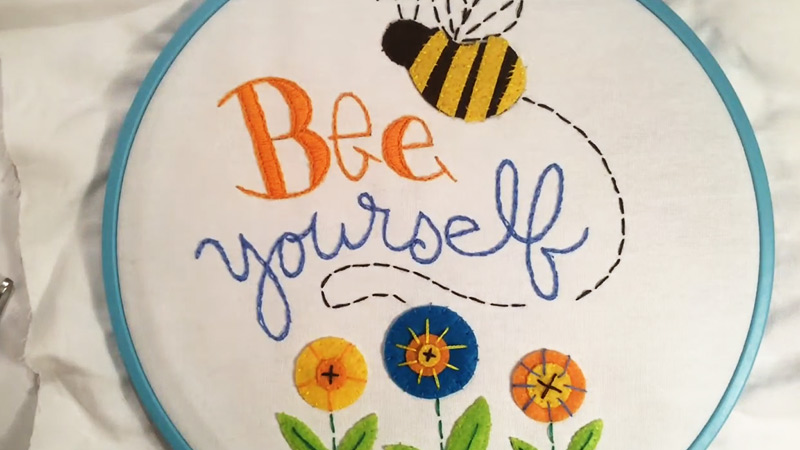
What Is Stamped Embroidery?
Stamped embroidery, a captivating needlecraft technique, is a testament to the enduring artistry of textile creation. This method simplifies the intricate process of traditional embroidery, making it accessible to both beginners and seasoned artisans.
Origins of Stamped Embroidery
To understand stamped embroidery, we must delve into its origins. The roots of this technique can be traced back through centuries of human history, where needlework played a significant role in various cultures.
Early civilizations used hand embroidery to adorn garments, religious artifacts, and household items. As this art form evolved, so did the need for more accessible ways to create intricate designs.
The Essence of Stamped Embroidery
At its core, stamped embroidery is about merging precision and creativity. The process begins with a piece of fabric featuring a pre-printed design. This design serves as a guide for the embroiderer, indicating where to place each stitch.
The patterns range from simple motifs to intricate scenes, catering to diverse tastes and skill levels.
The choice of fabric is crucial in stamped embroidery. Common fabrics include cotton, linen, or even specialty fabrics like Aida cloth, known for its regularly spaced holes.
Techniques Involved
Stamped embroidery encompasses various stitches, each contributing to the overall texture and aesthetic of the finished piece.
Some common stitches include the backstitch, satin stitch, and French knot. The choice of stitches depends on the intricacy of the design and the desired effect.
Understanding the nuances of these stitches empowers embroiderers to bring the stamped patterns to life, infusing their unique style and creativity into each piece.
Endless Creative Possibilities
What sets stamped embroidery apart is the boundless creative freedom it offers. Whether you’re a novice seeking a relaxing hobby or an experienced artisan looking for a new challenge, stamped embroidery welcomes all. The pre-printed patterns are a starting point, sparking inspiration and guiding the crafting journey.
Versatility of Stamped Embroidery
The versatility of stamped embroidery extends beyond traditional designs. Modern patterns cater to various themes, from classic floral motifs to contemporary abstract art.
This adaptability makes stamped embroidery a canvas for self-expression, allowing crafters to imbue their creations with personal touches and unique interpretations.
Moreover, stamped embroidery isn’t limited to flat surfaces. Crafters can elevate their projects by incorporating three-dimensional elements and experimenting with textures.
Stamping a Legacy
As we immerse ourselves in the world of stamped embroidery, it becomes evident that this technique isn’t just about creating beautiful pieces; it’s about preserving a rich heritage.
By simplifying the process and making embroidery accessible to a broader audience, stamped embroidery ensures that the art of needlecraft continues to thrive.
How to Do Stamped Embroidery?
Embarking on the journey of stamped embroidery is a delightful endeavor that combines precision, creativity, and the joy of needlecraft. Here’s a step-by-step guide to help you master the art of stamped embroidery:
Prepare the Fabric
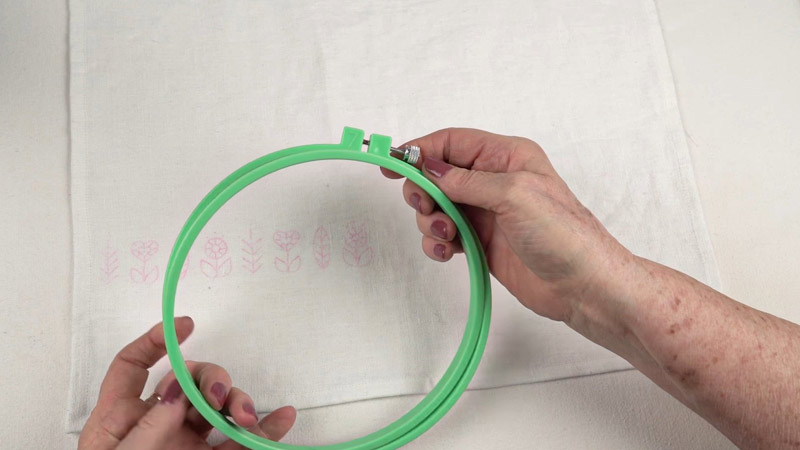
Place your stamped fabric in the embroidery hoop, ensuring that the design is centered and taut. Tightening the hoop secures the fabric, preventing wrinkles and making the stitching process more manageable.
Separate and Thread the Needle
If you’re using six-strand embroidery floss, separate the strands according to your pattern’s requirements. Thread the needle with the desired number of strands, usually between 1 and 3, depending on the thickness you desire.
Choose Your Starting Point
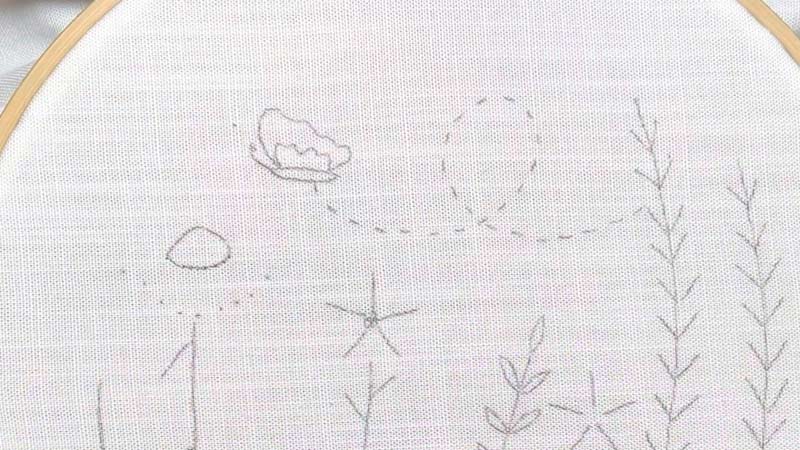
Examine the stamped pattern to identify a logical starting point. It’s often best to begin in the center or at a focal point of the design. This ensures that your embroidery remains symmetrical and balanced.
Start Stitching

There are various stitches you can use in stamped embroidery. Here are three fundamental stitches to get you started.
Backstitch is a basic stitch that is excellent for outlining. Bring the needle up through the fabric, then insert it back down slightly ahead, creating a continuous line.
To add texture and dimension, create French knots by wrapping the floss around the needle and inserting it back into the fabric near the starting point. This stitch is perfect for creating small, raised details.
Refer to the stamped pattern as your guide. The pre-printed lines indicate where each stitch should be placed. Follow the pattern’s instructions for color changes and stitch types.
Experiment with Colors and Textures
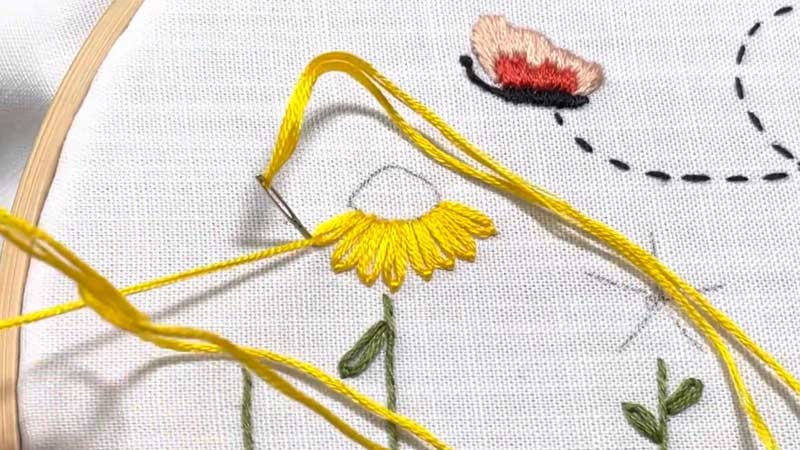
Stamped embroidery offers the flexibility to experiment with colors and textures. Feel free to deviate from the suggested color palette and explore different thread combinations. Incorporate additional stitches or embroidery techniques to add depth and interest to your project.
As you complete sections of your stamped embroidery, secure loose ends by knotting them on the backside of the fabric. Be mindful of the tension to ensure a neat and polished finish.
Finishing Touches
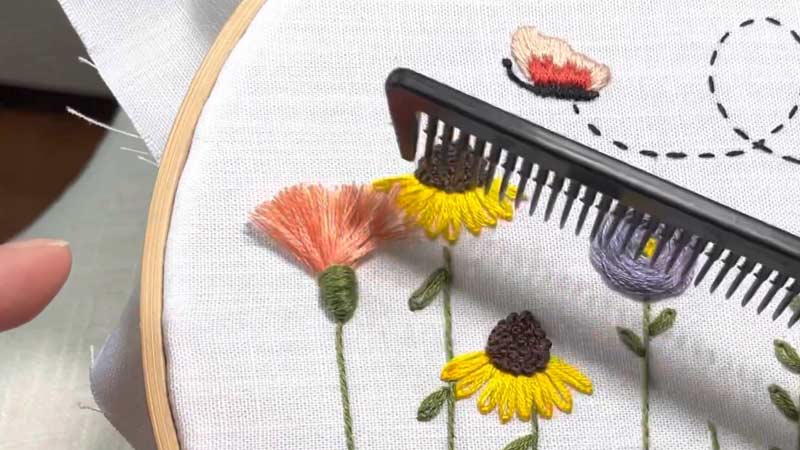
Remove the fabric from the hoop once you’ve completed the stamped embroidery. Trim any excess fabric, leaving a border for framing or finishing. If desired, wash and press the embroidered piece to remove any hoop marks or wrinkles.
Display Your Masterpiece
Whether you frame your embroidery-stamped piece, turn it into a decorative pillow, or incorporate it into another project, display your masterpiece proudly.
Stamped embroidery yields a beautiful creation and becomes a testament to your creativity and dedication to the art of needlecraft.
How to Wash Stamped Embroidery?
Washing stamped embroidery requires care to preserve both the embroidered design and the fabric. Here’s a step-by-step guide to washing stamped embroidery:
Check the Embroidery Material and Test for Colorfastness
Before washing, identify the type of fabric used in your stamped embroidery. Different fabrics may have specific care requirements. Perform a colorfastness test on a small, inconspicuous embroidery area using a mild detergent.
Dab a small amount of water and detergent on a white cloth and gently rub it on the embroidered area. If the colors bleed or fade, avoid washing the entire piece.
Remove Loose Dirt and Dust
If your stamped embroidery has collected loose dirt or dust, gently brush it off with a soft brush or use a lint roller. Avoid excessive pressure to prevent damage to the stitches.
Select a mild detergent that is suitable for delicate fabrics. Avoid harsh chemicals or bleach, which may damage the embroidery threads and fabric.
Hand Wash with Care
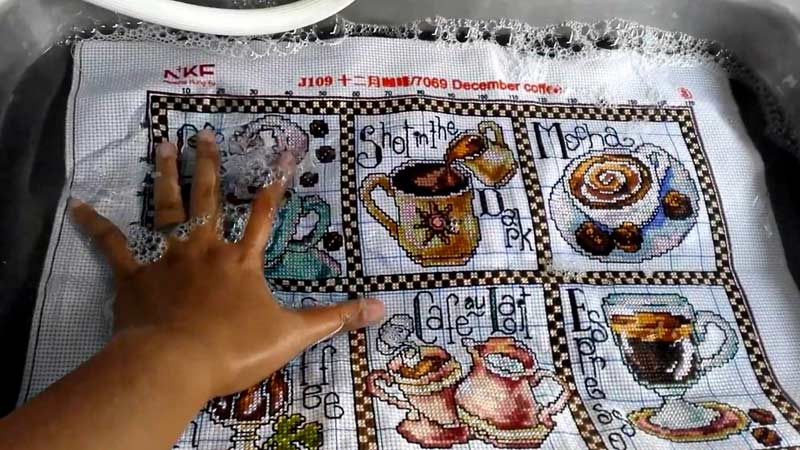
Fill a basin with lukewarm water and add a small amount of the chosen mild detergent. Gently agitate the water to create suds.
Immerse the stamped embroidery in the soapy water and gently swish it around. Be cautious not to rub or scrub the stitches vigorously.
Drain the soapy water and refill the basin with clean, lukewarm water. Gently rinse the stamped embroidery by swishing it in clean water. Repeat this process until all detergent is removed.
Pat Dry with Towels
Lay a clean, dry towel on a flat surface. Place the wet stamped embroidery face down on the towel to prevent any potential damage to the stitches.
Gently press another dry towel on top of the embroidery to absorb excess water. Avoid wringing or twisting the fabric, as this can distort the stitches.
Air Dry Flat
Lay the washed and damp stamped embroidery flat on a clean towel or drying rack. Allow the piece to air dry completely. Avoid hanging it while wet, as this can cause the fabric to stretch.
Iron with Caution
If ironing is necessary, use a low-temperature setting and place a clean, white cloth or a pressing cloth over the embroidery to protect the stitches. Iron on the reverse side of the fabric to smooth out any wrinkles.
Store Carefully
Once your stamped embroidery is completely dry, store it in a cool, dry place away from direct sunlight to prevent fading. Following these steps will help ensure that your stamped embroidery remains vibrant and well-preserved after washing.
Always refer to any specific care instructions provided with the embroidery kit or the fabric used for additional guidance.
FAQs
What is Stamped Embroidery?
Stamped embroidery is a needlecraft technique with a pre-printed design on the fabric, guiding the embroiderer on where to place stitches. It simplifies the embroidery process, making it accessible for both beginners and experienced crafters.
How is Stamped Embroidery Different from Regular Embroidery?
Stamped or Stamp embroidery differs from regular embroidery in providing a pre-printed pattern on the fabric. This eliminates the need for manually tracing the design onto the material, making it a more straightforward and beginner-friendly approach to needlework.
What Materials Are Needed for Stamping Method in Embroidery?
The essential materials for stamped embroidery include stamped fabric with a design, an embroidery hoop to stretch the fabric, embroidery floss in specified colors, embroidery needles, sharp scissors, and, optionally, a pattern guide.
Can Stamped Embroidery be Washed?
Yes, stamped embroidery can be washed, but it requires gentle care. Use a mild detergent suitable for delicate fabrics, hand wash in lukewarm water, and avoid harsh chemicals. Always test for colorfastness first, and air-dry the piece flat to preserve the embroidered design.
Are There Different Stitches Used in Stamped Embroidery?
Stamped embroidery involves various stitches, each contributing to the overall texture and aesthetic of the finished piece.
Common stitches include the backstitch for outlining, the satin stitch for filling larger areas, and the French knot for adding texture. The choice of stitches depends on the design and desired effect.
Conclusion
Stamped embroidery, with its blend of precision and accessibility, emerges as a gateway to a world where artistry meets simplicity.
As we conclude our journey through the realm of stamped embroidery, it becomes clear that this technique not only preserves the rich heritage of needlework but also invites new enthusiasts to partake in its beauty.
From novice crafters to seasoned artisans, stamped embroidery offers a canvas where creativity can flourish, guided by pre-printed elegance.
As needles gently dance along the imprinted patterns, a symphony of colors and textures unfolds, transforming fabric into a personalized masterpiece.
Whether you embark on this journey for relaxation, self-expression, or as a timeless hobby, stamped embroidery stands as a testament to the enduring allure of an art form that transcends generations, connecting us through the delicate threads of creativity.
Dive in and discover the beauty and endless possibilities of this unique embroidery.
Leave a Reply